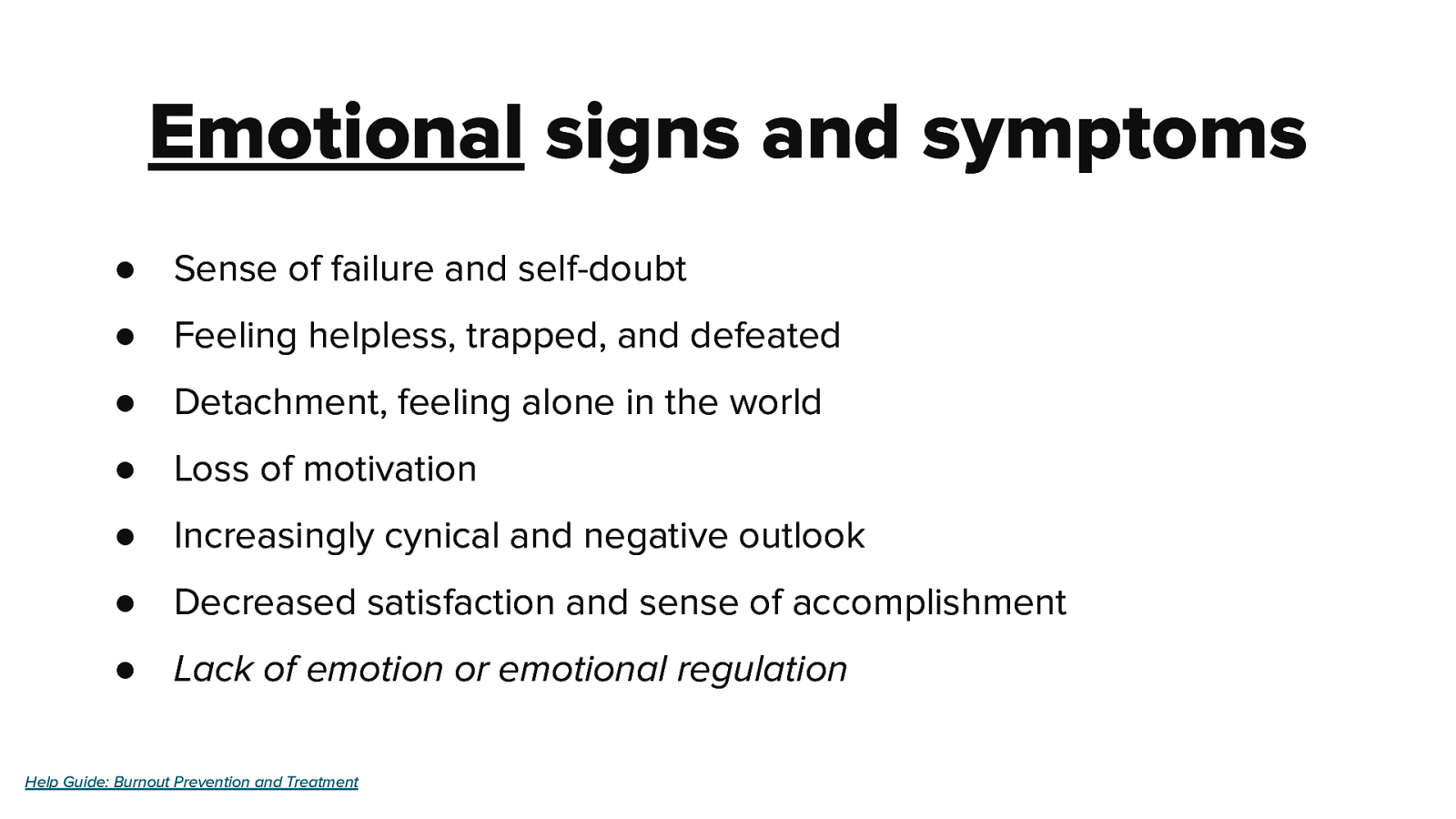

In 2015, The World Health Organization adopted a conceptualisation of burnout that is consistent with Maslach's. In 2005, the Swedish Board of Health and Welfare adopted a refined conceptualisation of severe burnout it described as "exhaustion disorder." The two researchers described burnout in terms of emotional exhaustion, depersonalization (feeling low-empathy towards other people in an occupational setting), and reduced feelings of work-related personal accomplishment. It was the first such instrument of its kind and the most widely used burnout instrument. Jackson published an instrument for assessing burnout, the Maslach Burnout Inventory (MBI). In 1976, Christina Maslach noted the term being used by California lawyers working with the poor, and began to study the concept. He observed that the burned-out worker "looks, acts, and seems depressed." After the publication of Freudenberger's paper, interest in the concept grew. He characterized burnout by a set of symptoms that includes exhaustion resulting from work's excessive demands as well as physical symptoms such as headaches and sleeplessness, "quickness to anger", and closed thinking.
#Burnout depersonalization free
In 1974, Herbert Freudenberger, an American psychologist, used the term in his academic paper "Staff Burn-Out." The paper was based on his qualitative observations of the volunteer staff (including himself) at a free clinic for drug addicts. This has been cited as the first known academic work to use the term for this concept. In 1969, HB Bradley used the term "burnout" in a criminology paper to describe the fatigued staff at a centre for treating young adult offenders.

In 1961, Graham Greene published the novel A Burnt-Out Case, the story of an architect who became greatly fatigued by his work, and who took much time to recover. Also, he points out that both conditions are considered normal reactions to abnormal situtations, offering an explanation for the ordinary and not the pathological. In a similar vein, burnout was seen as the product of the social and cultural changes that resulted from the transformation of an industrial society into a post-industrial service-oriented society". He says "Neurasthenia was understood as the product of rapid social and technological changes, which resulted from the transformation of an agricultural into an industrial society. Some of these similarities include that both conditions are mainly characterized by mental exhaustion and both of them are considered as diseases of their time, products of the society that we live in. Psychologist, Wilmar Schaufeli, draws a parallel between burnout and neurasthenia by pointing out similiarites between the two. Don R Lipsitt would later wonder if the term "burnout" was similarly too broadly defined to be useful. Beard yet further broadened the potential symptoms of neurasthenia over time, so that almost any symptom or behaviour could be deemed to be caused by it. The rest cure was a commonly prescribed treatment (though there were many others). In 1869, New York neurologist George Beard used the term " neurasthenia" to describe a very broad condition caused by the exhaustion of the nervous system, which was thought to be particularly found in "civilized, intellectual communities." The concept soon became popular, and many in the United States believed themselves to have it. The sonnet in question is one of Shakespeare's most famous. It has been suggested that the first printed use of the term "burnout" in English was in one of Shakespeare's sonnets in 1599, referring to a woman's love burning out. Gordon Parker believes the ancient European concept of acedia refers to burnout, and not depression as many others believe. WHO additionally states that "Burn-out refers specifically to phenomena in the occupational context and should not be applied to describe experiences in other areas of life." History Īccording to Wolfgang Kaskcha, "Burnout as a phenomenon has probably existed at all times and in all cultures." He notes that the condition is described in the Book of Exodus (18:17–18). While burnout may influence health and can be a reason for people contacting health services, it is not itself classified by the WHO as a medical condition or mental disorder.
#Burnout depersonalization professional
Burn-out, exhaustion disorder, neurastheniaĪ person who is experiencing psychological stressĮmotional exhaustion, depersonalization, reduced personal accomplishment, fatigue Īccording to the World Health Organization (WHO), occupational burnout is a syndrome resulting from chronic work-related stress, with symptoms characterized by "feelings of energy depletion or exhaustion increased mental distance from one’s job, or feelings of negativism or cynicism related to one's job and reduced professional efficacy".


 0 kommentar(er)
0 kommentar(er)
